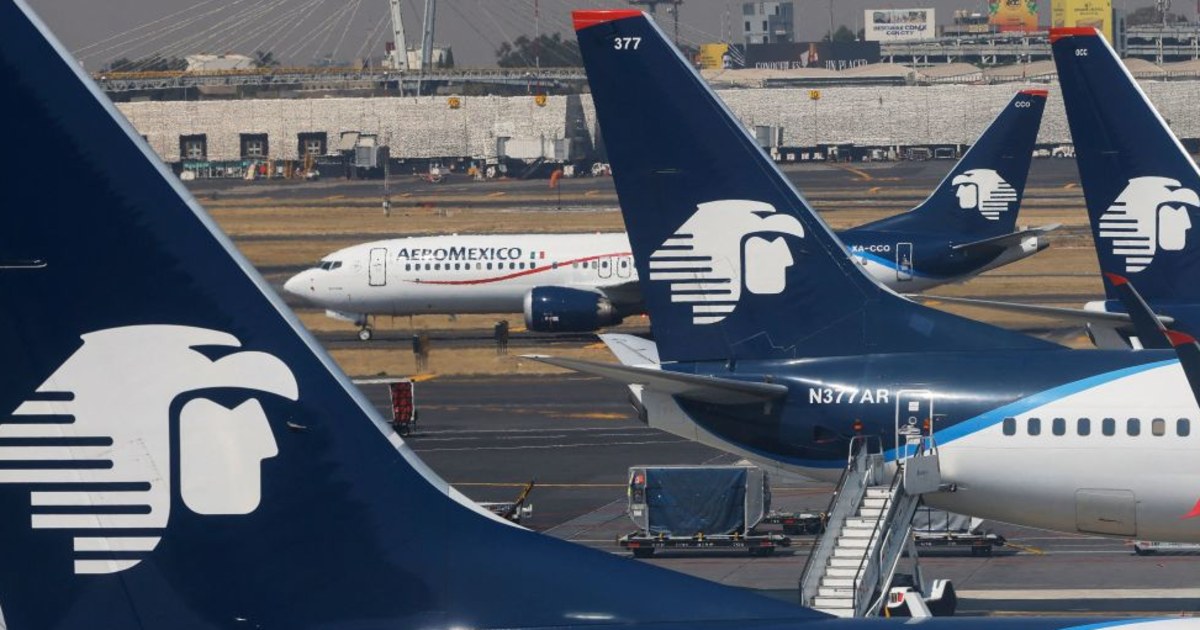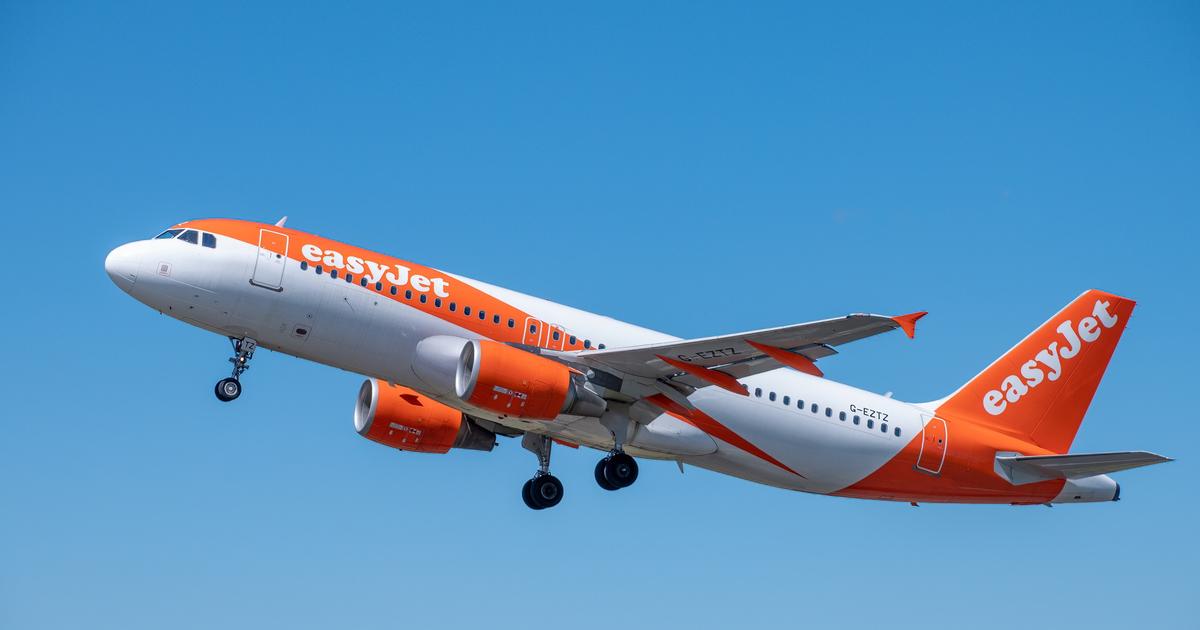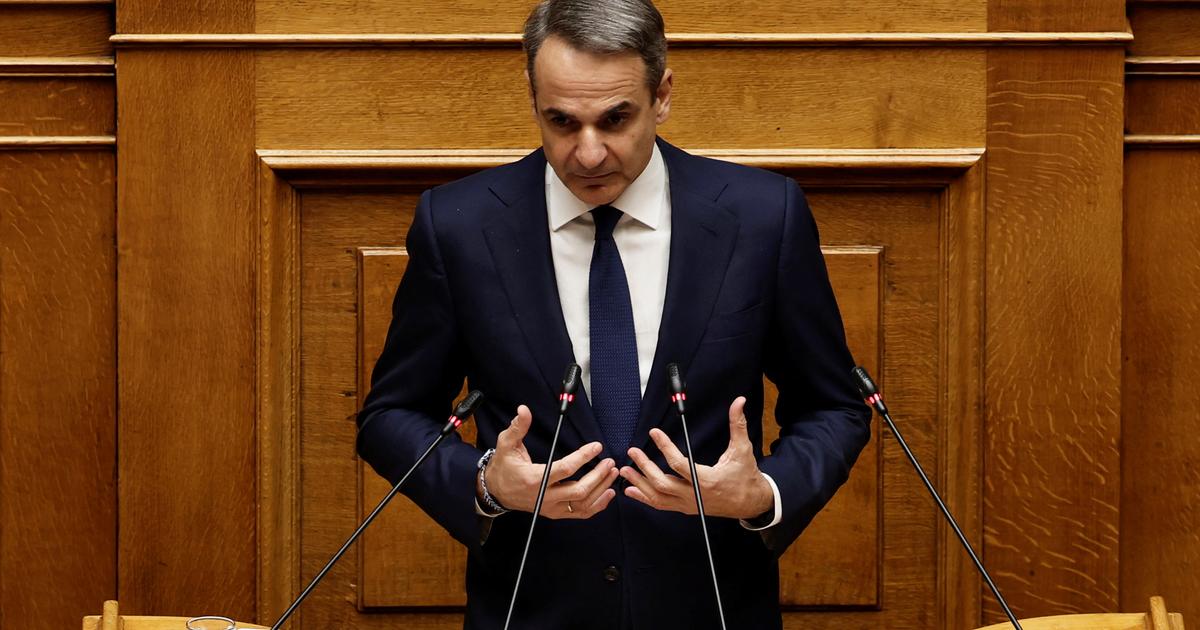Aeroméxico workers in front of an airplane at Mexico City International Airport Seila Montes
The pandemic has rebalanced the forces in the Mexican skies.
The precipitous drop in international tourism and the slow recovery of the domestic market have aggravated the poor financial and operational situation that Aeroméxico and Interjet, until recently, the largest airlines in the country, and has put thousands of jobs at risk.
Given the lack of support from the Mexican government to the sector, the low-cost model has quickly gained ground and is emerging as the great beneficiary of the economic downturn.
The coronavirus crisis has narrowed the pie to be divided.
Between January and August, transported passengers have fallen by 51% in the case of domestic flights and 58% in international flights compared to the same period in 2019, according to the latest data from the Ministry of Tourism.
More dependent on the outside, Aeroméxico and Interjet have taken the worst part.
For the first, the reduction has been 58%, from almost 14 million passengers to just under six million.
The second went from transporting just over 10 million people between January and August 2019 to about three and a half million this year, a 66% drop in traffic.
All airlines have lost passengers, but the drain has been less for
low-cost
.
Volaris and VivaAerobus concentrated in August, the last month with data, more than two-thirds of the domestic market and 21% of the international market, the former domain of Aeroméxico.
A year ago they had half of the domestic flights and did not reach 10% of the trips abroad.
According to analyst Brian Rodríguez, from the Monex Group, “the pandemic has been a catalyst for low-price airlines, even with lost revenue and passengers.
Their model allows them to offer better rates. "
Although the industry foresees a recovery until 2023 from pre-pandemic levels, the Government has refused to directly support the sector, which represents 2.7% of GDP and six and a half million jobs according to the Chamber of Air Transport.
Unlike other countries like the United States, which put on the table a package of 25,000 million dollars in subsidies and loans, President Andrés Manuel López Obrador has opposed providing support or reducing the tax burden.
"If you are going to see a company bankrupt, let it be the employer who assumes responsibility or the partners or shareholders," he declared in May.
To avoid that scenario, struggling airlines have sought liquidity on their own.
Aeroméxico filed for Chapter 11 of the United States bankruptcy law at the end of June.
In early October, a judge authorized him a $ 1 billion financing package.
Even with this breath of air, income slowly recovers.
In the third quarter of the year, these rose 79% over the previous quarter but decreased 74% compared to the same period in 2019, according to the quarterly report presented this week to the Mexican Stock Exchange.
The losses continued, although in a lower volume than the previous quarter, amounting to 2,882 million pesos, about 130 million dollars.
Aeromexico has tried to reduce costs "in view of the prospect of a prolonged process of demand recovery," as the quarterly report points out.
In its restructuring plan, presented this week before the New York court, Aeroméxico proposes the liquidation of 616 surcharges and another 150 from the Connect subsidiary.
The Sobrecargos Association endorsed these dismissals in its assembly at the end of September.
To the reduction of these places will be added 323 flight attendants who will stop working under the modality of a leave without pay.
The pilots have accepted reductions in their salaries of 30% for the last three months of the year.
266 of the 1,800 pilots have been given a leave without pay since July.
José Suárez, spokesman for the union, indicates that, beyond these licenses, the agreement does not contemplate job cuts for now and rules out a strike.
"What would enter the equation is to know the final fleet number to be able to know the real need for pilots," he says.
Interjet, the hardest hit
With a hybrid model that mixes traditional and low-cost features, Interjet is more vulnerable than Aeroméxico.
It drags problems with the Tax Administration Service, to whom it allegedly owes $ 27 million for non-payment of taxes between 2013 and 2017. In July, the company announced an injection of $ 150 million from entrepreneurs Alejandro del Valle and Carlos Cabal Peniche, now partners of the president of the airline Miguel Alemán Magnani.
There are doubts about whether the inflow of resources has been made effective, points out the aeronautical expert Rogelio Rodríguez, professor at UNAM.
“The shareholders have deferred the capitalization.
There is a vicious circle because the company is in default of the payment of workers' wages, it has liquidity and debt problems, ”he says.
Interjet has not responded to questions from this newspaper in this regard.
The airline is also facing the threat of a strike on October 30 by some of its workers, who denounce that they have not received a salary for at least a month.
It took Danilo Carmona, 31, more than 90 days to deliver the settlement.
For two years he was a revenue optimization specialist at Interjet.
Accustomed to handling the airline's figures, Carmona was a front-line witness to the sales collapse due to the pandemic.
"On a normal day the company sold between 30 and 40 million pesos, after March it began to sell between 2 and 3 million pesos," he explained.
Since March, he adds, employees have been notified of a 50% reduction in their salary.
The promise that his salary and that of his colleagues would be restored never came.
After months of living on half his income, he was notified of his dismissal in mid-August.
In Monterrey, Roberto Díaz Trejo, 39, is still waiting for the payment of 32,000 pesos that the airline owes him.
Until April, I worked as a ground crew.
With the reduction of air routes, the corporate made the decision to close its department.
"Six months have passed and they have not given me liquidation and I brought them the citations and they do not appear and my colleagues who are active in the airline have not received three or four fortnights."
Díaz Trejo seeks to recover even part of his settlement and his savings fund in the corridors of the labor courts.
Like him, thousands of workers in the sector, have endured in uncertainty the reduction of their salary or forced breaks.
Although Volaris and VivaAerobus have also been forced to reduce salaries and routes, they are emerging more gracefully than their two great rivals thanks to their fares and lighter structure.
In the case of Volaris, now the main airline in the country by number of passengers, its shareholders approved in September a capital increase of 3,500 million pesos, about 167 million dollars at this week's exchange rate.
Although its competitors recover, the company expects to maintain around 17% of the international market and 40% of the domestic market in 2021, ten percentage points more than just a year ago.

/cloudfront-eu-central-1.images.arcpublishing.com/prisa/HMG6IIOVFFANJEVTIMNO3S7YF4.jpg)













